
In this article, we get to compare the POCO X3 NFC and Infinix ZERO 8. Let's see who is the better pick at PHP 12,990. 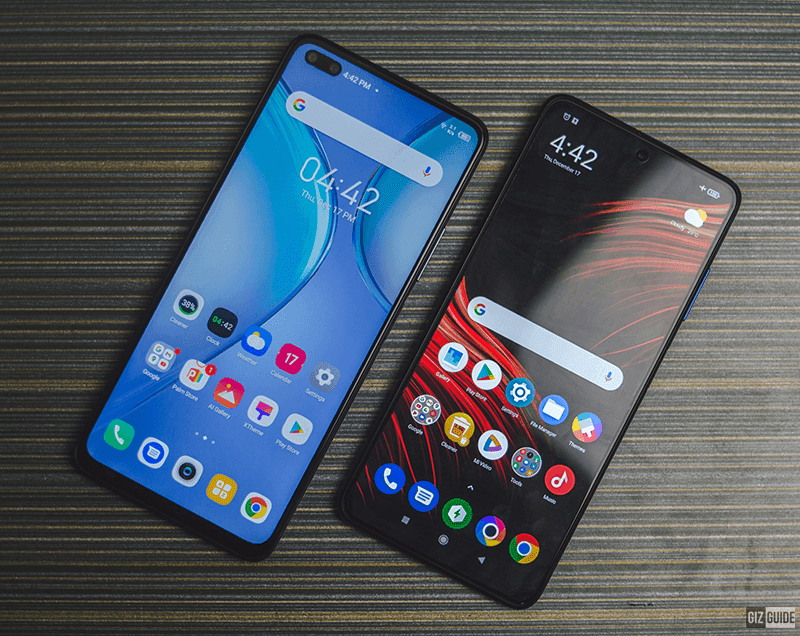 |
| Who comes out better? |
Both devices are good mid-rangers and offer much value for the price their asking for. Living at the exact price, we will pit them head-to-head and see who comes out with a better build, design, multimedia experience, performance, and cameras.
Build Quality/Design
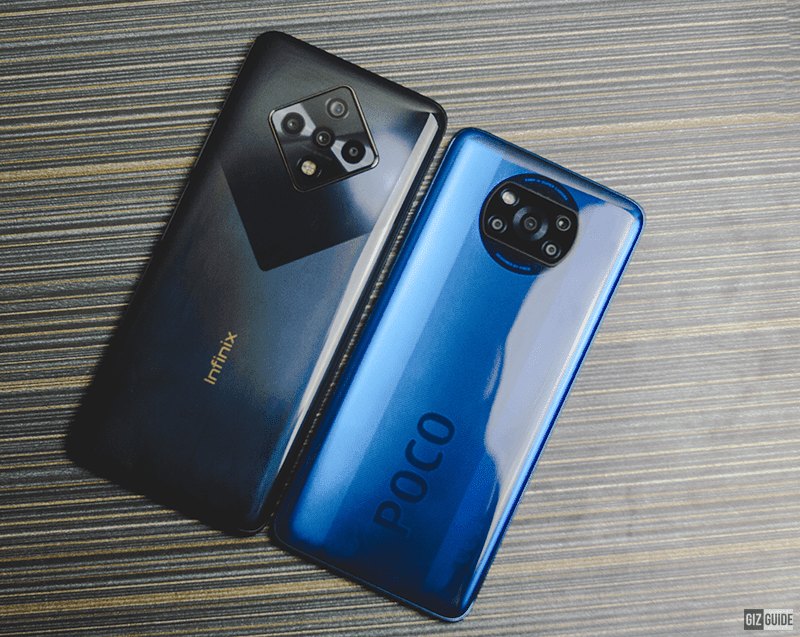 |
| Both have good design and build |
The POCO X3 NFC has a unique and bold design. It has a circular cutout to house the somewhat rectangular camera bump. It has a huge POCO branding at the back and a shiny, smooth finish. It is made out of a tough polycarbonate material as well. It measures 165.3 x 76.8 x 9.4 mm and weighs 215 g. |
| Topside |
The Infinix ZERO 8 also has a unique diamond camera cutout at the back. It has a glossy and smooth finish at the back. It also has a kind of two-tone colorway and a prism-like sheen when shined with light. It has a smaller Infinix branding compared to the POCO's. It is also made with a glasstic, polycarbonate material. It measures 168.74 x 76.08 x 9.07 mm and weighs 205 g.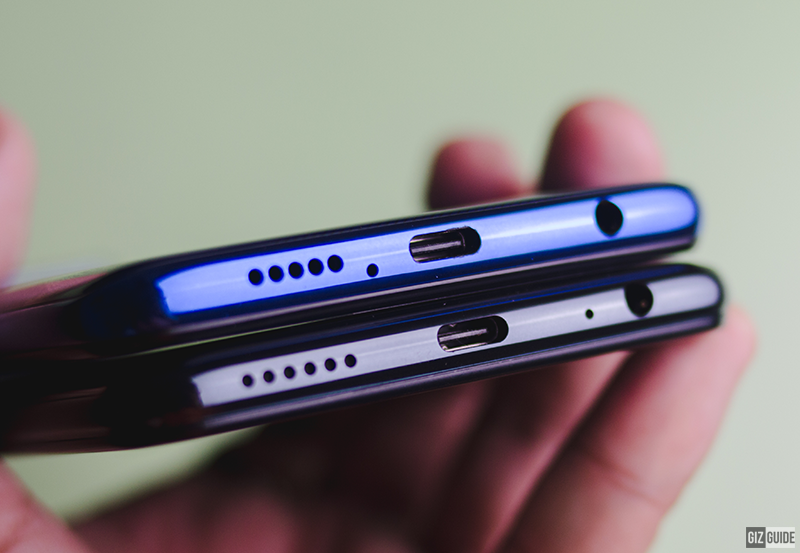 |
| Bottom ports |
We find that the POCO X3 NFC sports a better-looking design due to its more stand-out color, camera cutout, and engrave-like branding. But, this is no knock on the Infinix ZERO 8 glamorous design since it still looks great. |
| Left side |
However, the Infinix ZERO 8 came out to be more of a fingerprint and dust magnet. The crevices of its diamond camera cutout always accumulate specks of dust within the day while the POCO X3 NFC does not. |
| Right side |
For ergonomics, both devices are huge and on the heavy side. Personally, I did not have a problem handling both single-handedly but I do have big hands. Those with smaller mitts may have an issue with the size though.
Button and port orientations are pretty much the same for both devices. The bottom houses the speaker grille, USB-C ports, and headphone jacks. The right side houses the volume rocker, power button/side-mounted fingerprint reader while the left side houses the SIM card tray.
Multimedia Experience
 |
| The screens |
The POCO X3 NFC has a 6.67-inch FHD+ LCD screen with a cinematic 20:9 aspect ratio, extra smooth 120Hz refresh rate, 240Hz touch sampling rate, HDR10, Widevine L1, and TÜV Rheinland Low Blue Light certification.
The Infinix ZERO 8 has a large 20:9 6.85-inch FHD+ display with FHD+ resolution, 90Hz refresh rate, 180Hz touch sampling rate, and a pill-shaped punch-hole housing a dual front camera setup.
Infinix ZERO 8 has a bigger screen but in terms of tech and multimedia experience the POCO X3 NFC comes out ahead. 120Hz refresh rate and HDR10 support alone give it a big advantage.
Touch responsiveness is accurate for both devices even with 10 fingers on the screen at the same time. This is great for both multitasking and more especially for games.
POCO X3 NFC sports stereo speakers while the Infinix ZERO 8 has a single bottom-firing speaker with DTS Audio support. Both deliver quality sound even at higher volumes but POCO's stereo speakers take the lead here. Using the 3.5mm headphone jack or Bluetooth headphones is still recommended for a more immersive experience especially for the POCO X3 NFC with its Hi-Res audio support.
POCO X3 NFC has dual-mics for calls and recording while the Infinix ZERO 8 has no mention of dual-mics. Both deliver good quality audio during calls and recordings.
Cameras
 |
| Both have an interesting camera bump |
At the back of the POCO X3 NFC, it has a quad-camera setup with 64MP f/1.89 Sony IMX682 w/ PDAF + 13MP f/2.2 119-degree ultra-wide-angle + 2MP f/2.4 4cm macro + 2MP f/2.4 depth + LED flash. For selfie, it has a 20MP f/2.2 sensor.
For the Infinix ZERO 8, it has a 64MP f/1.9 Sony IMX686 + 8MP ultra-wide-angle + 2MP Bokeh + 2MP Ultra Night Video + quad-LED flash. It also has a dual-camera selfie setup with 48MP + 8MP ultra-wide-angle. |
| The Infinix ZERO 8 has a dual selfie camera while POCO X3 NFC has one |
For camera modes and features, the POCO X3 NFC has Pro Mode, Video, Photo, Portrait, Night Mode, 64MP Mode, Short Video, Panorama, Documents, Vlog Mode, Slow Motion, Time-lapse, Front & Back Simultaneous mode, Long Exposure, and Clone Mode.
The Infinix ZERO 8 has Pro Mode, Short Video, AI CAM, Beauty Mode, Bokeh Mode, Super Night, AR Shot, Slow Motion, Panorama, Documents, and Super Macro Mode.
Rear Camera Samples
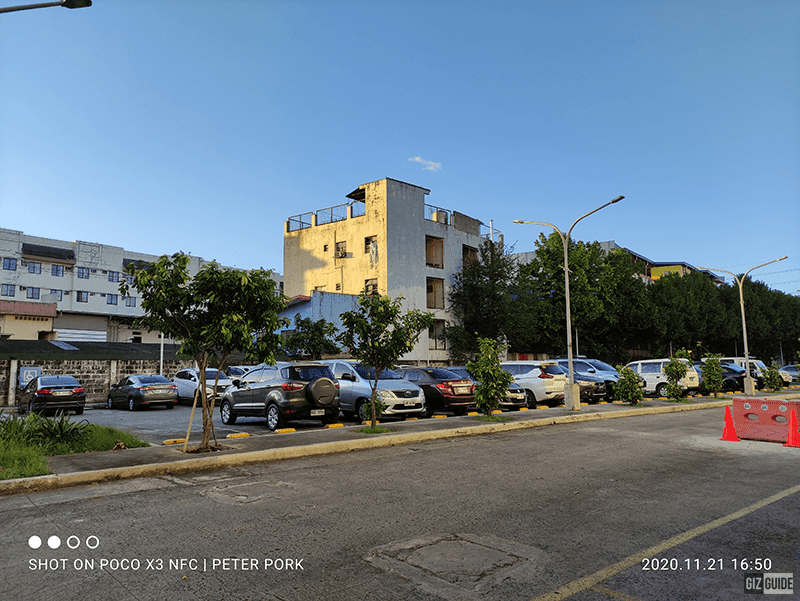 |
| POCO X3 NFC, Daylight, Normal mode |
 |
| Infinix ZERO 8, Daylight, Normal Mode |
As you can see in this first pair, this is using the normal mode. POCO X3 NFC's shot is just overall better with good exposure, contrast, and saturation. Infinix ZERO 8's still has weird color adjustments that make it warmer overall but with fewer details. |
| POCO X3 NFC, Daylight, Ultra-wide-angle shot |
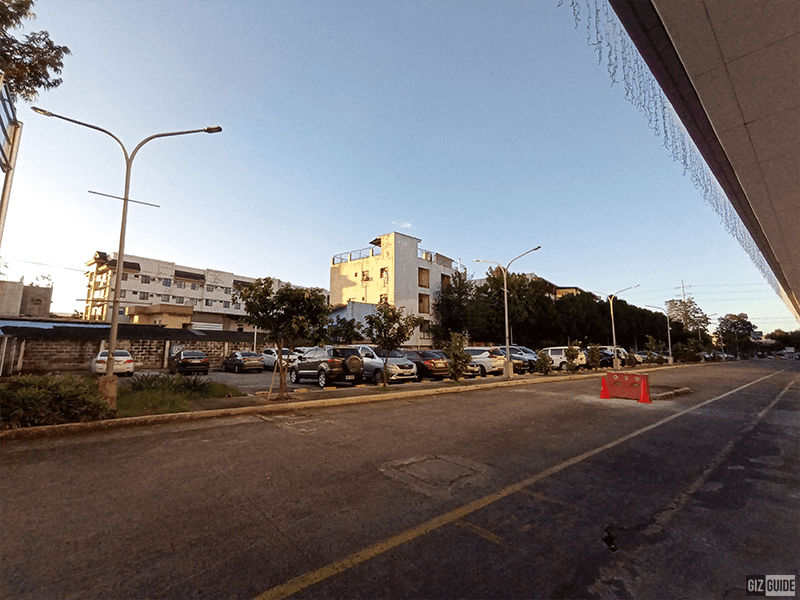 |
| Infinix ZERO 8, Daylight, Ultra-wide-angle shot |
The Infinix ZERO 8 seems to suffer in a reddish tone when shooting photos. As you can see in these ultra-wide shots, the POCO X3 NFC's photo is more natural and more vibrant as well. |
| POCO X3 NFC, Daylight, Zoom shot |
 |
| Infinix ZERO 8, Daylight, Zoom shot |
The same holds true here. The POCO X3 NFC's zoomed shot comes out more vibrant and crisp. The sky is bluer and the sheen of the sunlight is warmer as well. It also retains more details.
 |
| POCO X3 NFC indoors shot with fluorescent lighting |
 |
| Infinix ZERO 8 indoors shot with fluorescent lighting |
The same holds true indoors. In this shot, the overall Infinix shot seems brighter but the colors seem washed out. Comparing it to the POCO X3 NFC, you can see more details in the rice. It also has a more accurate color reproduction. Even the menu's blue is more vibrant. |
| POCO X3 NFC food shot, indoors |
 |
| Infinix ZERO 8 food shot, indoors |
The same holds true here. The crab is a lot more vibrant in the POCO X3 NFC shot while Infinix ZERO 8 colors have less saturation and contrast. The latter just comes out less attractive overall. |
| POCO X3 NFC night shot 1 |
 |
| Infinix ZERO 8 night shot 1 |
In this shot, we can say that Infinix ZERO 8 came out on top. Overall, it held more details, has better colors, and contrast. In the POCO X3 NFC shot, you can see a bit of image quality deterioration.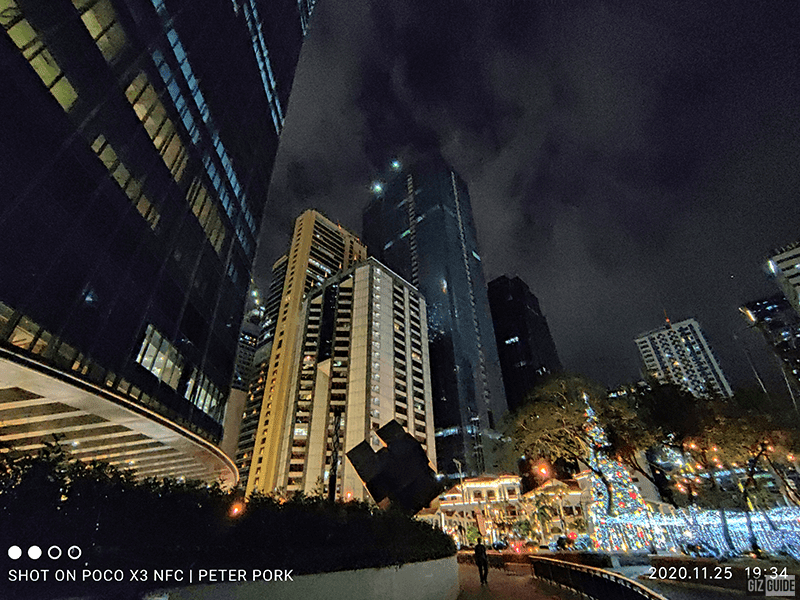 |
| POCO X3 NFC night shot, ultra-wide |
 |
| Infinix ZERO 8 night shot, ultra-wide |
As you can see, POCO X3 NFC ultra-wide, night shot is better. The colors are more vibrant and the image retained more details overall. In the Infinix ZERO 8's photo, you can't even see the ornaments and design of the Christmas tree due to the overexposure. |
| POCO X3 NFC ultra-wide night shot 2 |
 |
| Infinix ZERO 8 ultra-wide night shot 2 |
Another sample of POCO X3 NFC ultra-wide mode working well at night. Infinix ZERO 8's shot came out washed out and overexposed.
Selfie Camera Samples
 |
| Infinix ZERO 8, Daylight selfie |
 |
| POCO X3 NFC, daylight selfie |
The POCO X3 NFC shoots selfies pretty well but we gotta give the lead to the Infinix ZERO 8 here. It has more natural colors and retains more image details. POCO X3 NFC has a brighter image though. |
| POCO X3 NFC selfie indoors |
 |
| Infinix ZERO 8 selfie indoors |
Indoors, POCO X3 NFC has a closer-to-reality color reproduction, contrast, and exposure. The Infinix ZERO 8 is also great as it looks a bit brighter but the colors are a bit washed out. |
| POCO X3 NFC, Night shot |
 |
| Infinix ZERO 8, Night shot |
In terms of brightness, the POCO X3 NFC is brighter. The Infinix ZERO 8 looks good as well and it looks like it retained more details for our subject.
Performance
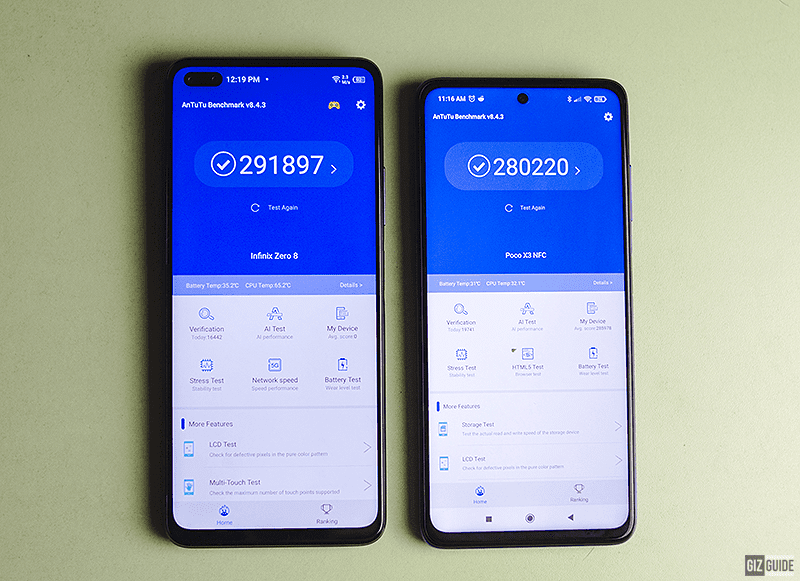 |
| POCO X3 NFC and Infinix ZERO 8 AnTuTu Benchmark scores |
Inside the POCO X3 NFC is the 2.3GHz 8nm Snapdragon 732G octa-core processor, Adreno 618 GPU, 6GB LPDDR4X RAM, up to 128GB UFS 2.1 expandable storage, and a 5,160mAh with 33W fast charging.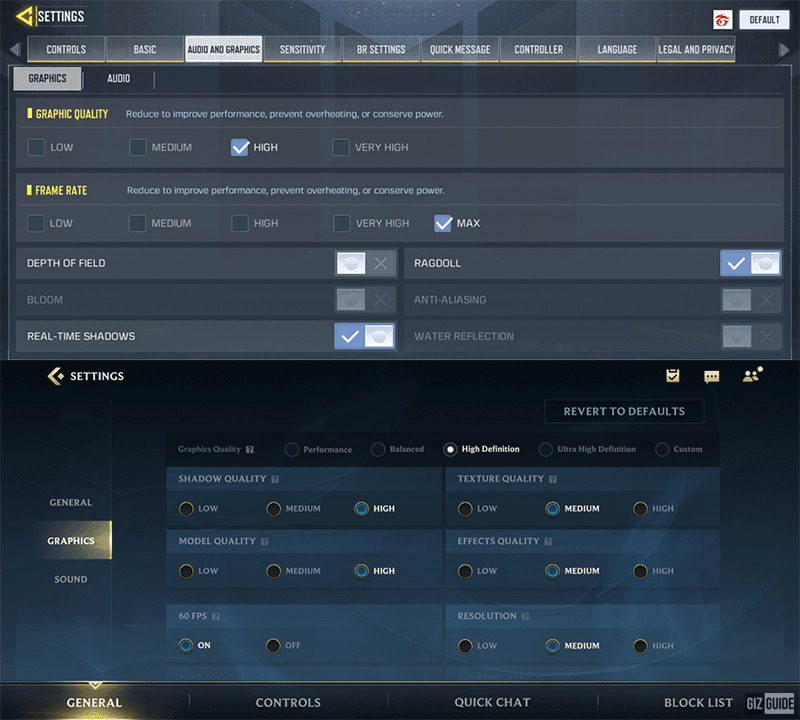 |
| POCO X3 NFC game settings |
 |
| Infinix ZERO 8 game settings |
Infinix ZERO 8 has the 2.05GHz 12nm MediaTek Helio G90T octa-core processor, Mali-G76 3EEMC4 GPU, 8GB RAM, 128GB expandable storage, and a 4,500mAh battery with 33W USB-C Super Quick Charge technology.
In AnTuTu, the Infinix ZERO 8 took a significant lead with a score of 291,897 while POCO X3 NFC scored 280,220 points. In real-life usage, multitasking is closer in terms of speed. There are no major differences in terms of launching apps and switching between apps.
In gaming, POCO X3 can get do a mix of medium and high in eSports titles such as League of Legends: Wild Rift and COD: Mobile while maintaining 60 fps. Infinix ZERO 8 was able to go all High on Wild Rift but other than that it is virtually the same. In terms of thermal, the POCO X3 NFC came out hotter after around 5 games of 60 fps Wild Rift gaming.
The POCO X3 NFC was able to last around 7 to 8 hours during my real-life daily usage test. The 5,160mAh battery really handles the FHD+ 120Hz screen fairly well. The Infinix ZERO 8 was able to last for around 6 hours doing the same tasks. It has a bigger screen with a 90Hz refresh rate as well as a smaller battery which could be the main factor here.
Both have dual-band WiFi, 700MHz 4G LTE, Bluetooth 5.0, and GPS. Infinix ZERO 8 and POCO X3 NFC both have their own version of Liquid Cooling Technology that really helped maintain thermals during gaming. |
| POCO X3 NFC Homescreen |
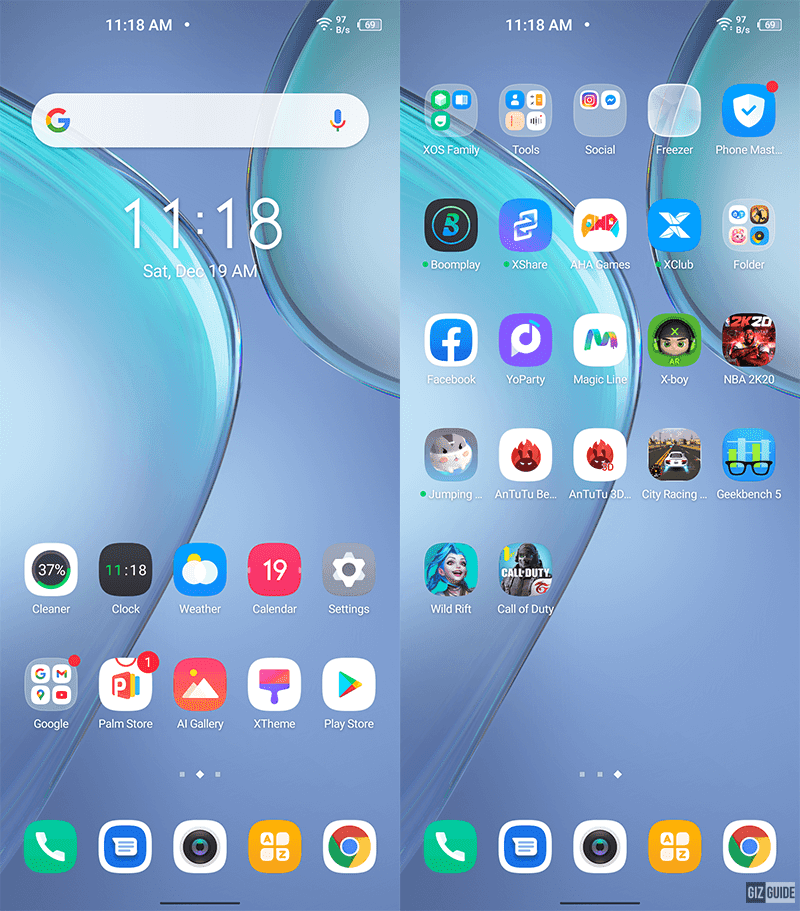 |
| Infinix ZERO 8 Homescreen |
The POCO X3 NFC runs an Android 10 with MIUI 12 while the Infinix ZERO 8 runs Android 10 with XOS 7.0. The POCO X3 NFC kept the theme closer to stock Android and is very responsive and intuitive. Infinix ZERO 8's UI also looks good but has a bit more proprietary skinning. The Infinix ZERO 8 has instant apps plastered at the top of the App Drawer which can be bothersome to some. It also has the apps alphabetically-organized out of the box and scrolls from top to bottom.
The POCO X3 NFC has a more streamlined approach with no extra bells and whistles. It has the app drawer categorized into functions as well.
Overall, both deliver an intuitive and user-friendly experience with little to no performance hiccup. |
| POCO X3 NFC UI |
 |
| Infinix ZERO 8 UI |
POCO X3 NFC advantages - Better camera performance, better screen tech with 120Hz refresh rate and HDR10, bigger battery, IP54 water splash resistance, stereo speakers, IR Blaster
Infinix ZERO 8 advantages - Bigger screen, bigger RAM, better performing CPU and GPU
POCO X3 NFC vs Infinix ZERO 8 Specs Comparison
| Device | Infinix ZERO 8 | POCO X3 NFC |
| Display | 6.85-inch 3D curved Gorilla Glass 3 protected LCD screen w/ 90Hz refresh rate, FHD+ 2400 x 1080 resolution at 384 ppi | 6.67-inch 2.5D curved Gorilla Glass 5 protected LCD (LTPS) screen w/ 120Hz refresh rate, HDR10, FHD+ 2400 x 1080 resolution at 395 ppi |
| CPU |
2.05GHz 12nm MediaTek Helio G90T octa-core processor
| 2.3GHz 8nm Snapdragon 732G octa-core processor
|
| GPU | Mali-G76 3EEMC4 | Adreno 618 |
| RAM | 8GB | 6GB LPDDR4X |
| ROM | 128GB expandable via microSD card slot up to 256GB (dedicated) | 64GB/128GB UFS 2.1 expandable via microSD card slot up to 256GB |
| Back Camera | 64MP f/1.9 Sony IMX686 + 8MP ultra-wide-angle + 2MP Bokeh + 2MP Ultra Night Video + quad-LED flash | 64MP f/1.89 Sony IMX682 w/ PDAF + 13MP f/2.2 119-degree ultra-wide-angle + 2MP f/2.4 4cm macro + 2MP f/2.4 depth + LED flash |
| Selfie Camera | 48MP + 8MP ultra-wide-angle | 20MP f/2.2 |
| Battery | 4,500mAh w/ 33W Super Quick Charge
| 5,160mAh w/ 33W fast charging |
| OS | Android 10.0 w/ XOS 7.0 | Android 10 w/ MIUI 12
|
| Connectivity |
WiFi 802.11 b/g/n/ac (2.4GHz/5GHz), 700MHz 4G LTE, Bluetooth 5.0, OTG, FM Radio, GPS, GLONASS, dual SIM
|
WiFi 802.11a/b/g/n/ac (2.4GHz/5GHz) 2x2 MIMO, 700MHz 4G LTE, Bluetooth 5.1, FM Radio, NFC, GPS, NavIC, dual SIM (hybrid)
|
| Sensors | Accelerometer, light, orientation, proximity, gyroscope, sound, magnetic |
Accelerometer, light, orientation, proximity, gyroscope, sound, magnetic, pressure
|
| Others | Fingerprint sensor, face unlock, DTS audio, Liquid Cooling Technology, USB-C, Colors: Black Diamond, Silver Diamond
| Fingerprint sensor, face unlock, IR Blaster, IP54 water splash resistance, stereo speakers, Hi-Res Audio, dual-mic, USB-C, Z-axis linear vibration motor, LiquidCool Technology 1.0 Plus, Shadow Gray, Cobalt Blue |
| Dimensions | 168.74 x 76.08 x 9.07 mm | 165.3 x 76.8 x 9.4 mm |
| Weight | 205 g
| 215 g |
| Price | PHP 11,990 | PHP 10,990 (6GB/64GB), PHP 11,990 (6GB/128GB)
|
Verdict
Ok, the POCO X3 NFC also has a PHP 12,990 variant to directly match up with Infinix ZERO 8. In terms of performance, it is pretty close but the Infinix ZERO 8 felt snappier that can be attributed to the CPU and bigger RAM. It was also able to pretty much max out the games I played with better thermals as well.
However, the POCO X3 NFC came out on top of almost everything else. It has a slightly smaller screen, yes, but it has a 120Hz refresh rate and HDR10 support. It also has a better-performing 64MP quad-camera setup.
Infinix ZERO 8 has a better dual-camera 48MP selfie system though. POCO also has a bigger battery capacity, IP54 water splash resistance, stereo speakers, and IR blaster.
Both are great devices but POCO X3 NFC offers a better package overall.
What do you guys think?



























































Post a Comment